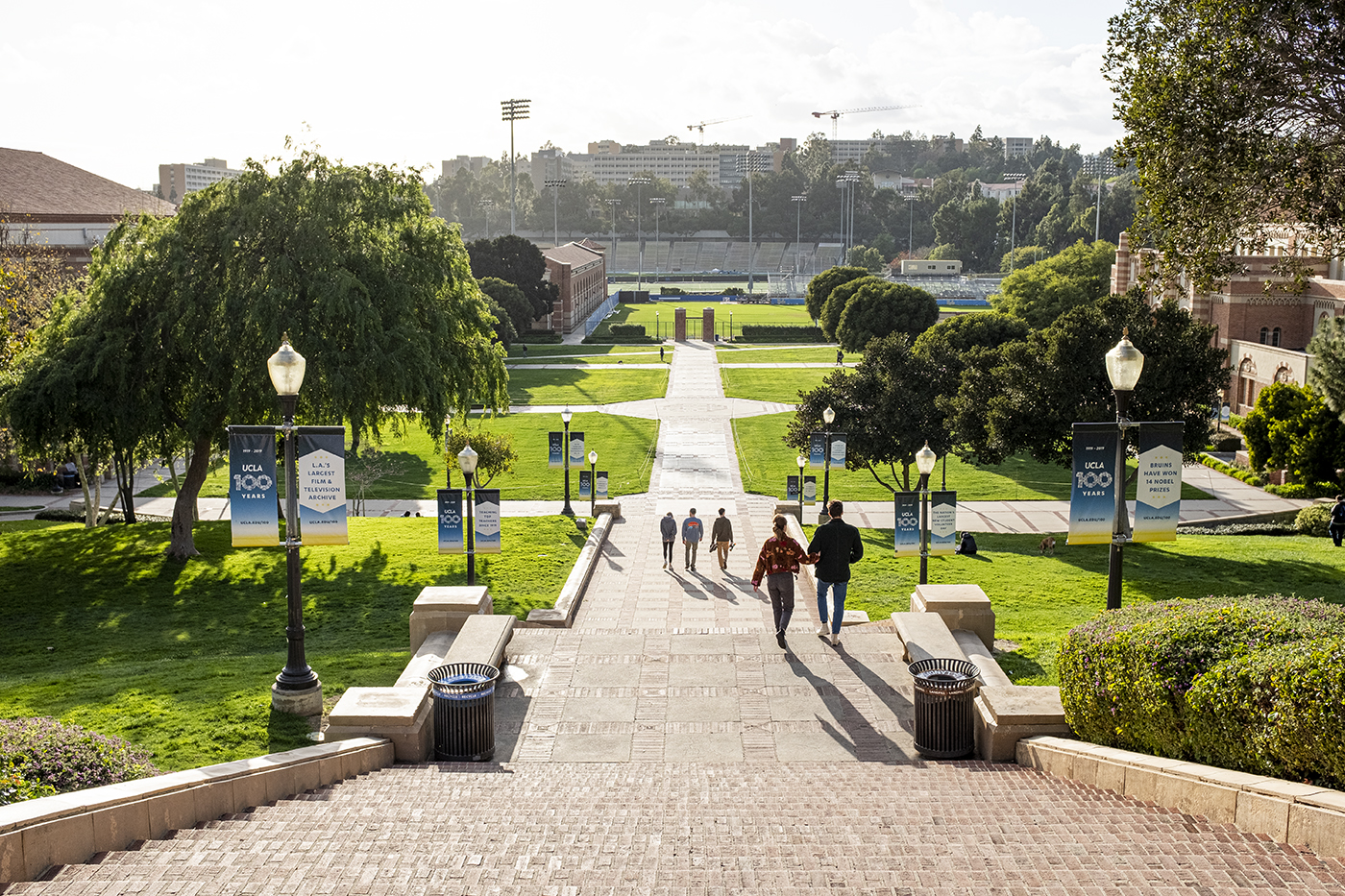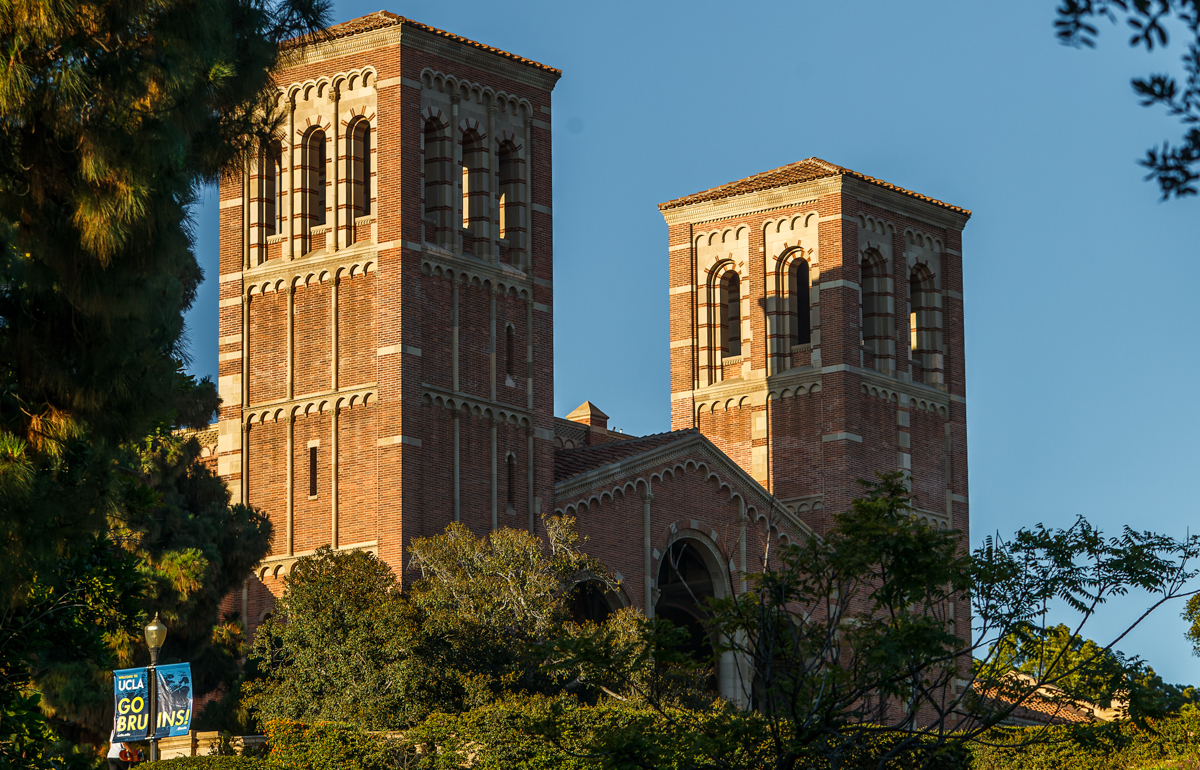Narrated Articles — Opinion: Subject of racial representation remains divisive after affirmative action’s end

Photo credit: Helen Quach
By Tavian Williams
April 3, 2024 1:47 p.m.
Listen to Opinion columnist Tavian Williams read his article “Opinion: Subject of racial representation remains divisive after affirmative action’s end.” The article was published October 22, 2023.
Opinion: Subject of racial representation remains divisive after affirmative action’s end
In June, the United States Supreme Court eliminated the use of race-conscious admissions in colleges and universities across the country by a vote of 6-3.
Affirmative action has evolved since its establishment in the 1960s during the Civil Rights Movement. Although the practice today is often discussed in terms of race, it is important to acknowledge that it was also gender-based and benefited women, too.
It existed to address historically discriminatory admissions practices against both groups, who were often relegated to create their own universities, such as historically Black colleges and universities and women’s colleges.
Affirmative action aimed to provide marginalized groups with equitable access to higher education at all universities, allowing them to pursue the American Dream and achieve upward social mobility. The implementation of quotas was a form of reparations to make college admissions more equitable for underrepresented groups.
The 1978 Supreme Court case, Regents of the University of California v. Bakke, eliminated the quota system, and subsequent revisions in the 2003 cases, Gratz v. Bollinger and Grutter v. Bollinger, shaped the policy’s constitutional use to what it is today – a tool to promote student diversity.
Affirmative action was never a flawless practice, but for the sake of creating a student body as diverse as our country, a system like it is still necessary.
But as the dust settles from the decision in June and college application season commences for high school seniors, many institutions are actively changing how they review applications, seeking to maintain a racially diverse atmosphere while complying with the Supreme Court’s new precedent.
This is with exception to the UC system, which navigated this fate almost 30 years ago.
In 1996, California voters passed Proposition 209, removing affirmative action in state programs, including education, public employment and government contracting. If affirmative action’s future nationally looks like it did after its abolition in the UC system, what lies ahead is alarming.
After Proposition 209 took effect, the UC schools experienced an immediate decline in Black and Hispanic students’ enrollment. At UCLA specifically, the Black student population fell from 7% in 1996 to 3.4% two years later. By the fall of 2006, the numbers reached a nadir, with only 96 Black students enrolled in the freshman class of around 5,000 students. The group was dubbed the Infamous 96.
There is some hope, as UCLA is in the process of becoming a designated Hispanic-Serving Institution while the Black student population has almost reached its numbers before Proposition 209. Today, the Black student population, admitted without affirmative action, stands at 6%, nearing the state’s Black population, which makes up 6.5% of California.
Still, the same can’t be said about other UC schools.
At Berkeley, for example, the Black student population lingers at around 3%.
Owen Knapper Jr., a second-year political science student at UC Berkeley and the chief of staff to the president of the Associated Students of the University of California, reflected on how a lack of racial diversity on campus has influenced his involvement in campus politics.
“One club organization was out passing out brochures and flyers to the students that were in front of me – … they didn’t come up to me and give me an interaction,” Knapper said. “I had to go to them and initiate the conversation to see basically how I could get involved.”
The experience left Knapper feeling isolated and excluded, which inspired him to join the Equity, Inclusion, and Belonging department in the Office of the President at the ASUC.
Knapper’s story of experiencing and overcoming instances of prejudice at UC Berkeley reveals the detrimental effects of students’ lack of exposure to different cultural experiences, backgrounds and ideas on campus.
The push for racial equity and diversity – which encompasses people from various ethnicities, social classes, genders and sexual orientations – has grown in the 21st century, exemplified by the height of the Black Lives Matter movement in 2020.
There is a need for diversity on university campuses to allow for the exchange of perspectives among peers as well as fostering unity, understanding and an appreciation for other cultures and viewpoints. This can help to cultivate knowledgeable citizens adept at unbiased real-world interactions.
Without diversity, marginalized students may feel isolated, and the potentially hostile environment can lead to imposter syndrome or other issues associated with mental health.
Nadia Combs-Mahone, a second-year undeclared student planning on pursuing data science at UC Irvine, also mentioned feeling out of place in campus spaces.
“There have been times in public spaces where Black people aren’t very common, … like math classes, calculus classes, classes that are more specific to my STEM major. I definitely feel like the odd one out,” Combs-Mahone said. “I get stares. People don’t really assume that my major has to do with data science or anything that has to do with STEM. They just assumed that I won’t be there for long.”
At UCI, the Black student population is less than Berkeley’s at only 2%. Across the UC system, the Black population is collectively 5%.
I decided to matriculate at UCLA instead of other UCs mainly because of the racial demographics. UCLA had a higher Black student population, making me feel more confident that the atmosphere would be more tolerant.
In many ways, diversity, in a racial sense, is what affirmative action represents today. Yet, the practice has been controversial and unpopular among many from its inception. Today, half of U.S. adults disapprove of colleges using race and ethnicity as a factor in admissions decisions, according to a 2023 Pew Research study.
Ivan Shen, a second-year actuarial science student at UC Riverside, said he understands why some universities use this policy but believes admittance should be based on merit and nothing else. Shen instead suggested an alternative approach to make college admissions an equal playing field for Black and Latino students to fairly compete with their counterparts.
“America really could improve on the public schooling system, especially in poorer areas,” Shen said. “And I feel like … the government should do something to maybe put some more funds there so everybody could be on the same playing field, and no one’s at a disadvantage.”
This method, combined with affirmative action as a temporary solution, should have been the standard. Focusing on efforts to make K-12 systems more equitable through increased funding could raise standardized test scores and math and literacy rates across all racial categories, making college admission truly fair for all, which I can support.
Applying this to Justice Sandra Day O’Connor’s opinion from the Grutter v. Bollinger case of phasing out affirmative action in 25 years, the practice could have been discontinued long ago because racial diversity would happen naturally.
Vijay Jojo Chokal-Ingam, a career coach, resume writer, admissions consultant and an alumnus of the UCLA Anderson School of Management, has a unique personal experience with the practice of affirmative action in admissions.
Back when he was applying to medical school, he had a 3.1 GPA and a 31 MCAT score out of 45. Believing that he didn’t have much of a shot at getting in as an Indian American applicant, he decided to pass as an African American applicant.
“An African American applicant with my graded test scores had a high probability of admission. So I said, ‘Well, OK, so why don’t I do that?’” Chokal-Ingam said. “So, I shaved my head. I trimmed my long Indian eyelashes, and I applied to medical school as a Black man.”
He chronicled his experiences in a book called, “Almost Black: The True Story of How I Got into Medical School by Pretending to Be Black,” where he writes about interviewing at competitive schools such as Harvard University, Yale University and Columbia University while being waitlisted at the University of Pennsylvania and Washington University in St. Louis.
But today, Chokal-Ingam is a staunch opponent of affirmative action programs, viewing the practice as a form of legalized racism. A year ago, he stood on the Supreme Court steps with the president of Students for Fair Admissions, the nonprofit that took Harvard University and the University of North Carolina to court over their affirmative action policies.
He said the only diversity he believes in is diversity of opinion.
Chokal-Ingam also said affirmative action promotes racist stereotypes about the capabilities and professionalism of African American and Hispanic individuals – that these groups cannot succeed without special help, which isn’t true, he added.
UCLA’s growing Black and Hispanic student populations prove his point that universities can foster diverse communities without affirmative action, even if it is only one example. The problem, however, is that it took almost three decades and is less about individual ability and more about the systemically ingrained educational barriers that trace back to slavery.
It’s worth considering that affirmative action can be seen as flawed and giving preference to certain groups of applicants over others, but this perspective disregards the privilege that white students have been afforded for centuries.
I met Chokal-Ingam by ironic coincidence at the Starbucks on Weyburn Avenue while constructing this article. Out of all days and time to write this, out of all coffee shops, out of all seats to choose, I sat across from him. It was after meeting him that I asked to interview.
We saw eye to eye on the principle of our beliefs but differed in our approaches. Through it all, I understand why he chose to pass as Black and hold a deep respect for his opinion on affirmative action, but I do not condone the actions he took to gain admittance to medical school.
My empathetic view of affirmative action was more aligned with a current Ivy League student who was vocal about his dissent when the court released its decision.
Nick Lee, a second-year education and mechanical engineering student at Brown University, will soon see his campus transition away from affirmative action programs.
“I’m scared. I’m going to be completely honest,” Lee said. “With race-neutral policies, it’s very difficult to be able to identify the background of where students are coming from – but to maintain cultural and racial diversity, it’s difficult.”
Lee, a member of a student activist organization at Brown University called Students for Educational Equity, reflected on his upbringing of being shaped by different cultures. He said his experiences made him realize that diversity was the point of education. But as a Korean American, he feels used by the American political system.
Lee talked about how Asian Americans were discriminated against, racialized and accused of spreading COVID-19. Now, the political pendulum has swung, and they stand at the center of the political stage as the face of affirmative action opposition.
“Asian Americans are often used to scapegoat on both sides. Two, three years ago, we were at the center of the COVID-19 pandemic … two, three years later, now they’re like, ‘Oh, but people are oppressing you,’” Lee said. “It’s frustrating because it’s always dependent on the agenda of the people who are in more power than us. … I think this is just another example of people using the model minority myth against us, to pit us against other minorities.”
Lee added that he does not speak on behalf of Brown University and Asian Americans. His views are representative of himself, but it is important to note the nuance of opinions within the Asian American community on the practice.
In August, the Coalition of Asian American Student Organizations wrote a letter to Teen Vogue denouncing the Supreme Court decision, shining a light on how race-conscious admissions benefit all marginalized groups, encompassing Asian Americans from low-income families and underrepresented ethnic backgrounds.
At its core, people affected by affirmative action desire the same outcomes – to attend prestigious universities. Both sides want fair representation in admission. Students want justice for enduring discriminatory practices, both past and present.
But each side will continue to view the situation from a polarized lens. As the use of affirmative action programs in the U.S. is halted, it will go down as one of the most divisive policies in our country’s history.
But legacy admissions, another form of affirmative action that grants students access to education based on birthright, is still permitted. These students gain acceptance because their family members are alumni. The goal is to have fair admission. If race-conscious admissions were unjust, then legacy admissions should be struck down too.
Affirmative action’s end should not stop the conversation of disparities in education.
To bring about positive change in our education and admissions systems, it is essential to understand the reasons behind the use of affirmative action, express our viewpoints clearly and be open to listening to both sides of the argument.
This approach can foster unity and progress rather than stagnation, indifference and, frankly, ignorance among ourselves.






